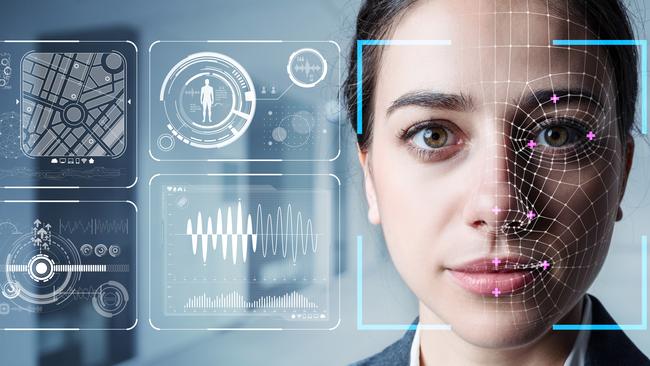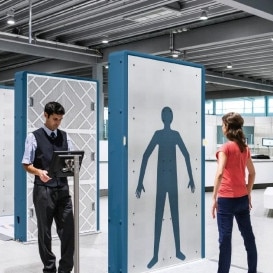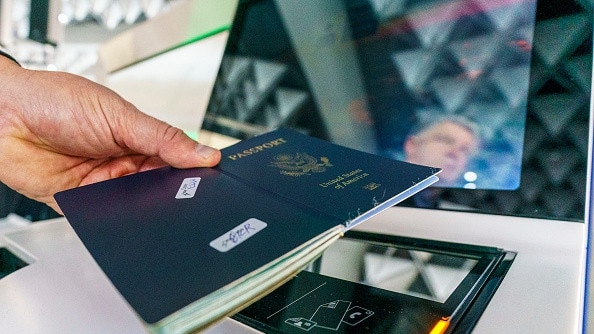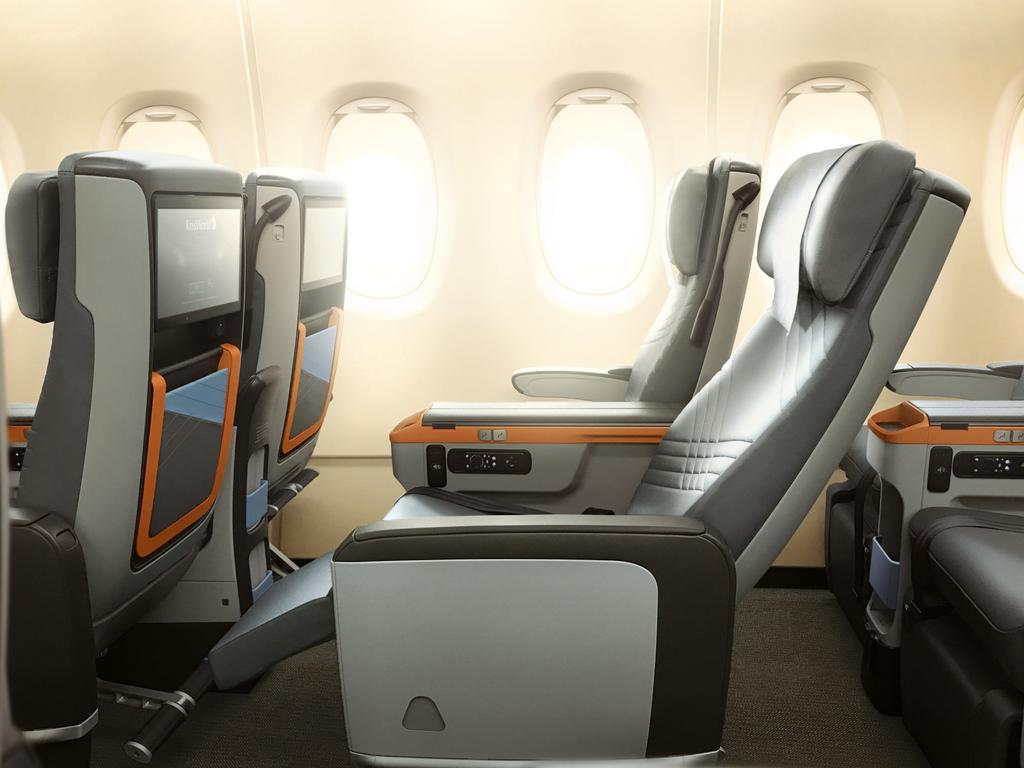Do the new 3D security scanners at airports really save you time?
State-of-the-art technology aims to reduce queues and frustrations but it has mixed results. What is your experience?

“You can leave your laptop in your bag,” the security officer at Sydney Airport’s domestic Qantas terminal tells me. But what appears to be a great idea to shave a few seconds from air travel has a catch, and it’s around my waist.
Laptops and liquids are no problem for new 3D scanners, which are being launched across airports. The humble belt buckle, however, can still sound an alarm when a traveller walks through a security checkpoint, prompting the need for a potential pat down.
The scanners can throw up bizarre results even with a belt removed.
At Melbourne’s international terminal last year, a security guard asked me if I wanted to go into a private room for a pat down on my “private area” after the 3D scanner detected an anomaly near my pubic bone. I have no metal implants or iron-plated underwear so was surprised that the technology produced this result.
I had a similar experience at Sydney airport recently, when after walking through the scanner, sans belt, it detected a hot spot the size of a shin guard on my left leg and something else on my left thigh. Thankfully, no private frisking was needed, just a quick pat down. So why is this so-called state-of-the art technology acting this way?

The scanners, which feature computed tomography (CT for short), are designed to detect threats to keep travellers safe. They do this in a non-discriminatory way. For example, glycerin is a common ingredient in body lotions and soaps but also explosives, so the scanner won’t be able to tell if you have been assembling a bomb or just had a shower.
The federal government demanded the security upgrade at Australian domestic airports after two men tried to smuggle an explosive device hidden in a meat grinder on an Etihad flight from Sydney in 2017.
Airport operators say the new scanners save time. When they were launched at Melbourne Airport in 2019 they were expected to slash the time passengers spend in security to about 60 seconds. While this may sound trivial ahead of a 14-hour flight to Los Angeles, the technology is designed to keep things moving, and importantly, keep people calm.
International Air Transport Association senior vice president Nick Careen says travellers value speed and convenience, and are increasingly embracing biometrics and off-airport processes, despite data concerns.

“Passengers have made it clear they want to spend less time booking and move through the airport faster,” Careen says. “And they are increasingly willing to use biometric data to complete more pre-departure tasks off airport to achieve this.”
On a recent Sunday evening, it took me about 10 minutes to walk from the front doors at Melbourne’s Tullamarine airport, through security and customs to the international terminal. Much of this was thanks to developments in airline apps. I was able to complete my contract tracing – a requirement before travel to the US – two days earlier on the Qantas app, and check in for my flight the night before, meaning I avoided the 50m-long queue at the check-in counter and proceeded straight through security.
The process hardly requires human interaction, save for the security officer asking me to remove my belt. Even when passing through customs, SmartGates can read the biometric chip in a passport upon leaving and re-entering the country.

The gates work on passports from 27 countries and operate in 22 languages. Earlier this year, on returning to Australia, an Indonesian man ahead of me put his passport in the SmartGate reader, which automatically displayed instructions on the kiosk screen in Bahasa – again, helping to keep things progressing.
But the technology isn’t seamless and it doesn’t negate the need for paper. After reading a passport successfully, the kiosk prints a ticket, which travellers need to pass through another gate. They have to be careful not to lose it, which can happen in the airport rush (I’ve been grateful when thoughtful travellers have tapped me on the shoulder to tell me I’d dropped mine).
A significant number of travellers are also concerned about data protection when passing through biometric gates, with 40 per cent saying they would be more open to using the technology if they were confident their personal communication was secure, according to IATA.
That said, in the past 12 months, the IATA survey revealed 46 per cent of passengers used biometrics at the airport, up from 34 per cent in 2022. Furthermore, 75 per cent of passengers prefer using biometric data over traditional passports and boarding passes.
“Passengers want technology to work harder, so they spend less time ‘being processed’, standing in queues. And they are willing to use biometric data if it delivers this result. But we need co-operation across the value chain and with governments to make it happen with secure technology that is available today,” Careen says.
If you love to travel, sign up to our free weekly Travel + Luxury newsletter here.
For more flight reviews and business class lounge reviews, click here.





To join the conversation, please log in. Don't have an account? Register
Join the conversation, you are commenting as Logout